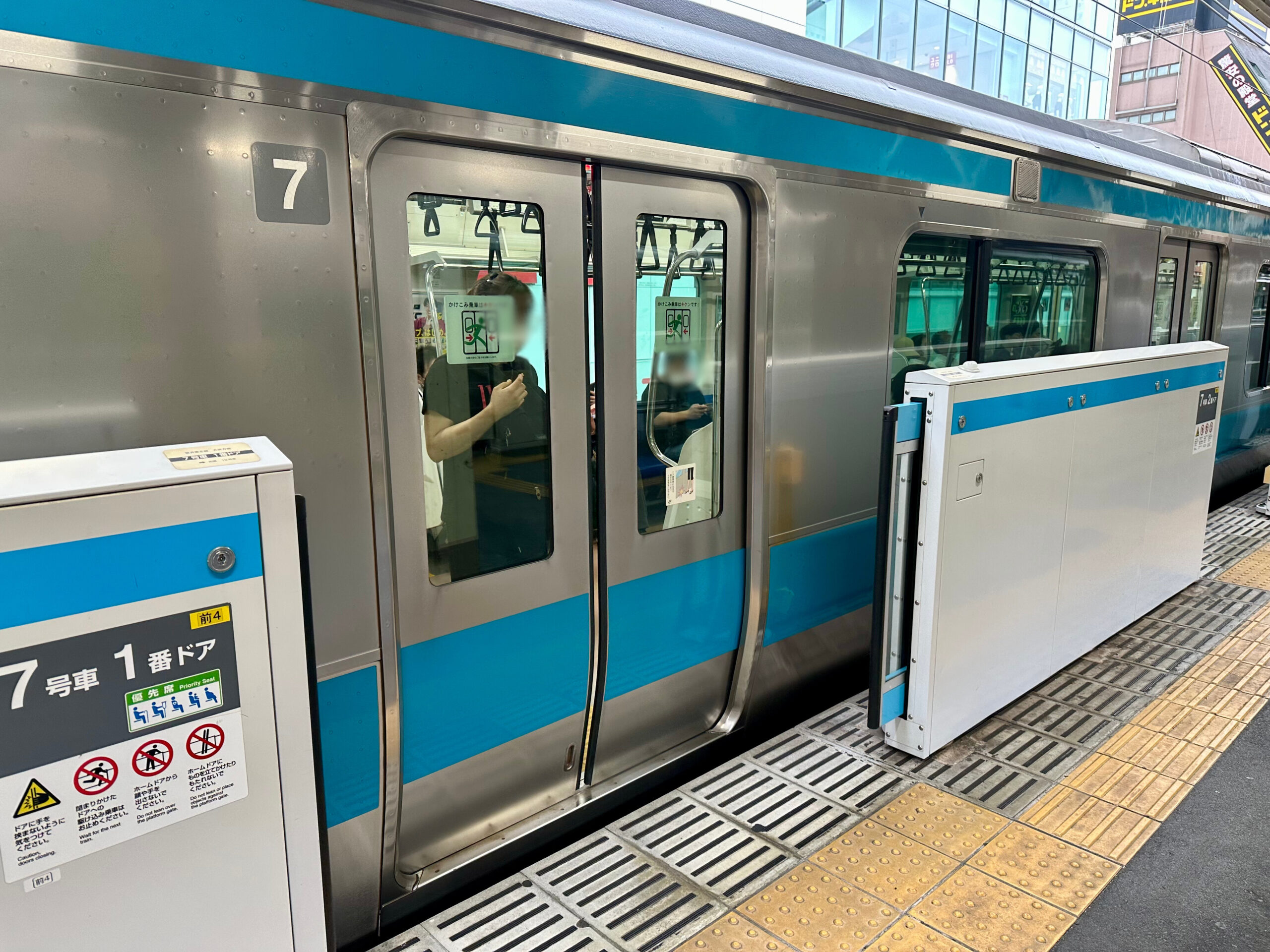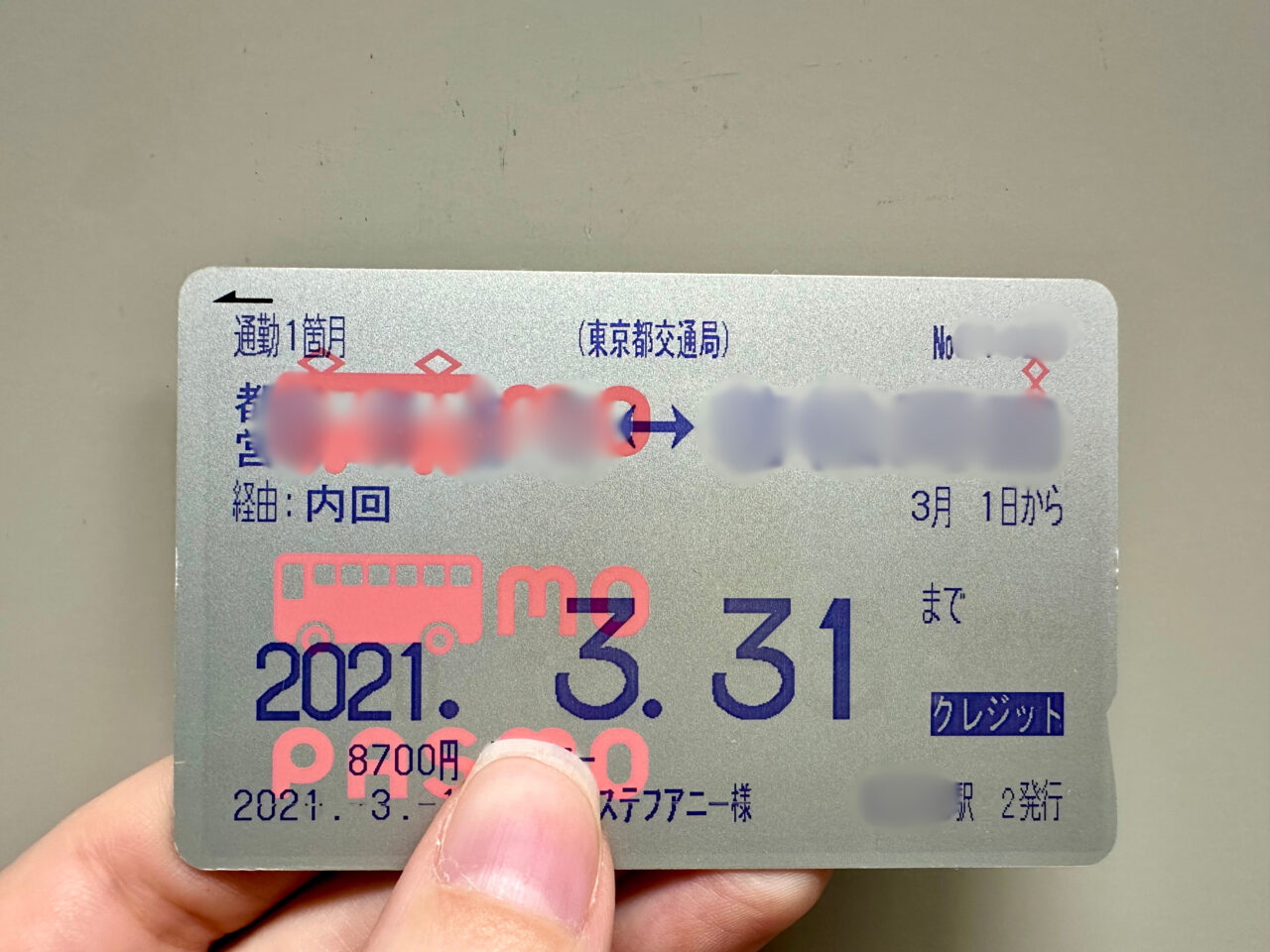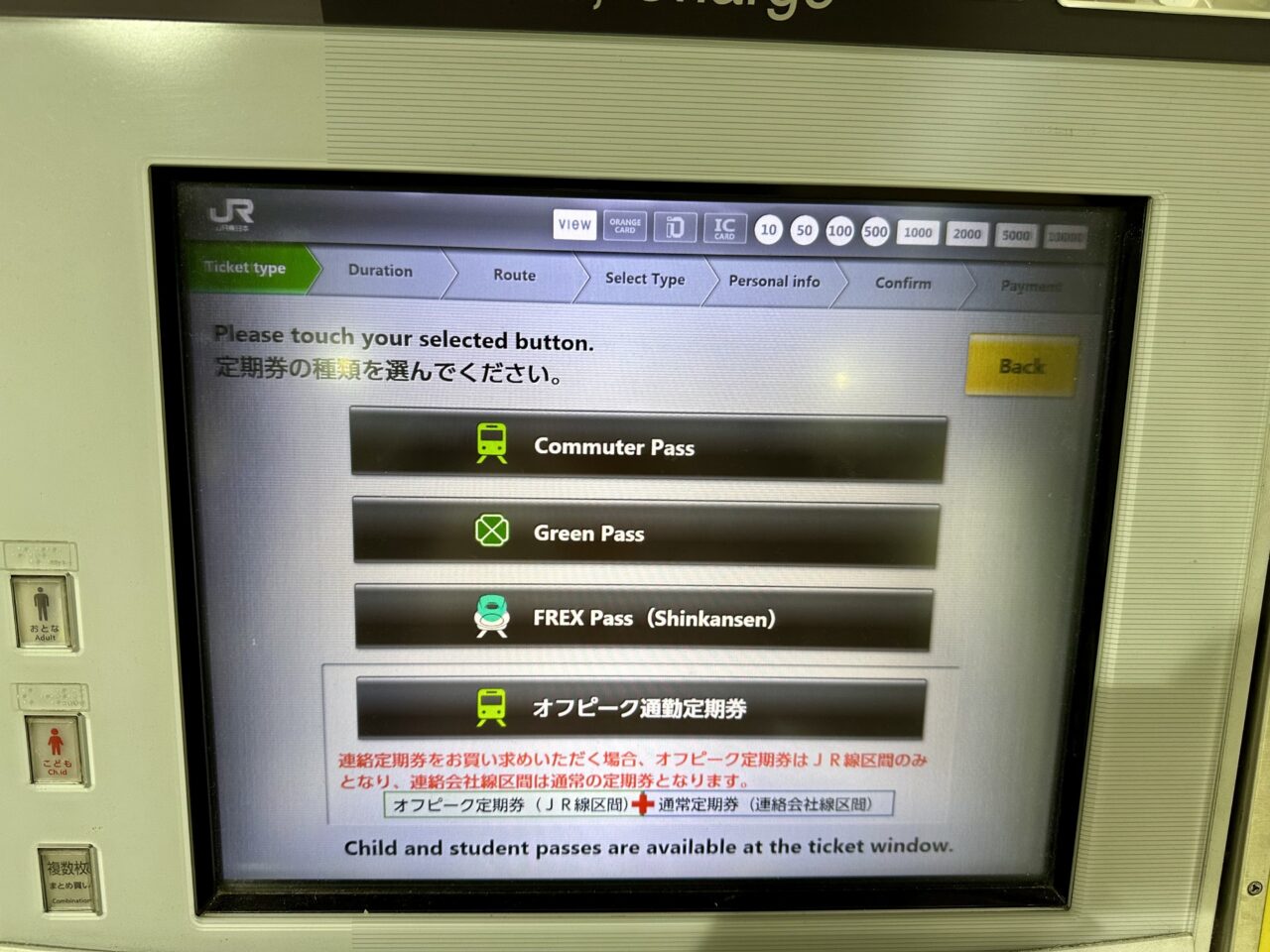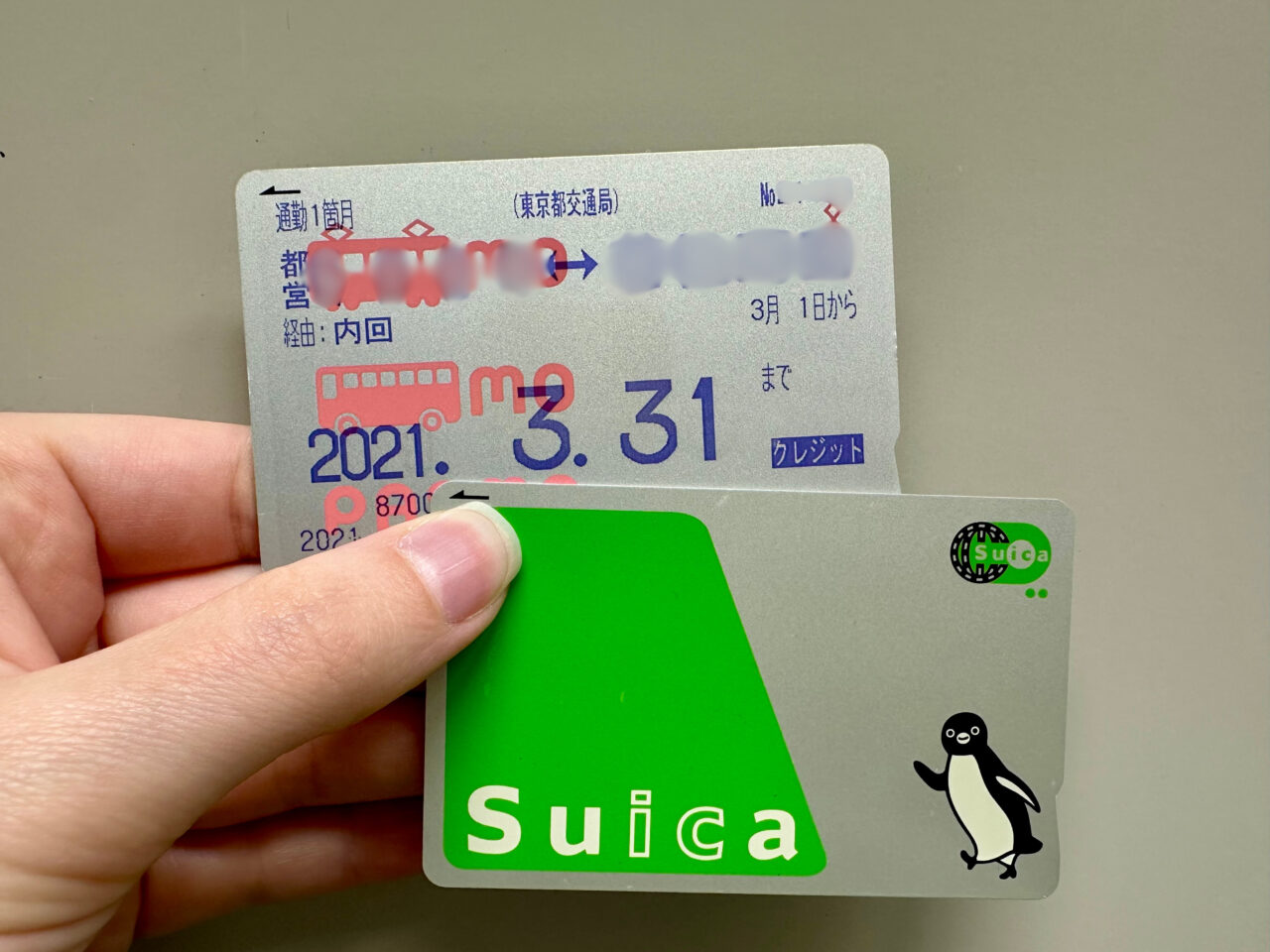Japanese Teiki-ken (Commuter Passes): Your Ultimate Guide to Big Savings & Easy Travel


Written by
Name: Stephanie
Country of origin: USA
How long you’ve lived in Japan: 6 years
Where you live in Japan: Tokyo (and 1 year in Gunma)
Instagram
We all know about Japanese trains and how amazing they are. Most of us know about the train passes that tourists can get when visiting Japan, too. But did you know about monthly commuter passes? You can save big time by buying monthly train or bus passes! They’re a great option for people working or attending school in Japan. So let’s hop on the train—I mean, bandwagon—and learn all about commuter passes in Japan!
Train Fare Vernacular
There are a few words in this blog that might be new to those that don’t live in Japan, so let’s learn them before we embark on our journey.
First, a commuter pass is known in Japanese as a 定期券 (teiki-ken), which literally means “fixed period ticket.” It’s basically a train pass that you can get for a set period of months for transport between two specific train stations or bus stops.
Next, IC cards are handy transportation cards, the size of a credit card, that you can top up for individual train rides or load a commuter pass onto. Integrated Circuit cards, according to the internet, although I doubt anyone actively thinks about what the acronym stands for, there are several pros to having an IC card over paper tickets, which I’ll explain below.

How to Use a Commuter Pass
Using a commuter pass is super easy! You just tap your IC card, smartphone, or smart watch on the ticket gate and walk in! When you get off the train, just do the same and you’re out! If you take the train beyond the stations included in your pass, you’ll only pay the fare for the distance between your last station on your pass and the station you disembark at.
Commuter Pass Categories
There are a few different categories of commuter passes, namely adult, student, child, shinkansen, and off-peak. The student and child categories will be cheaper than the adult pass, but because you need to show ID, you will have to buy it at the window rather than the machine for at least the first time you purchase it for most companies. Interestingly, there was one company’s machine that I had a look at where you could buy the child pass right on it, so be sure to check with your train company. As for shinkansen and off-peak passes, these are JR-specific passes. A shinkansen commuter pass can be bought from the ticket machines, and I talk about off-peak in detail below.

How to Get a Commuter Pass
Getting a commuter pass isn’t difficult at all. First decide the length of time you want a pass for; you can choose one, three, or six months. Next, decide whether you want a physical IC card or a digital one on your phone or watch. Finally, purchase the pass.
For buying a physical IC card commuter pass, you have to do that either at the ticket window or at the station’s designated commuter pass machines. If you use a machine, you select your start and end station and pass duration; enter your personal information, which will help them identify and return the card to you if it’s stolen; choose whether you want to add some extra money to the card in addition to the pass’s value; and pay. That’s it! It will come out with your name, validity period, and stations printed on it. When you renew your pass next time, it magically erases the printed data and reprints it. Many train companies’ machines have English interfaces, too.
If you’re buying a commuter pass for a bus rather than a train, for most bus companies you have to visit the bus company’s sales desk, information center, or designated commuter pass desk. However, if you’re riding a Toei bus, you can buy their bus commuter passes at the ticket machine of Toei Line subway stops. Please check with the specific bus company for more information.
For digital commuter passes on smartphones, they’re easy as well. I have a digital Suica card that I manage through the Suica app and operates through Apple Wallet, and PASMO has an app as well. Both apps are only available in Japanese. You can use the English interface of Apple Pay (or the equivalent digital wallet on your phone) to do regular top ups on your Suica/PASMO card, but it seems like you have to use the IC card’s dedicated app to add a commuter pass. If you can read Japanese, it’s a pretty easy process. If you cannot read Japanese, it might be a bit harder, but I might even recommend taking screenshots of the menus and then translating the photos, or translating your phone screen with another device, and giving that a go.

Is It Cost Effective?
Assuming you go to work or school every day, a commuter pass is really cost effective compared to buying two tickets every day! Let’s do an example route for fare comparison.
We’ll use the route of Tokyo Station to Shinjuku Station as an example. Assuming you work 5 days a week, that would be around 23 days per month (depending on the number of weekdays that month), and 2 trips per day would be 46 trips. One-way is ¥210 with a paper ticket and ¥208 with an IC card. If we multiply those values by 46, we get ¥9660 for paper tickets or ¥9568 for an IC card for a month with 23 workdays. A commuter pass, however, would cost just ¥6290 for one month! If you get the 3- or 6-month pass, the savings increase even more!
Let’s check out this graph comparing the costs of different ticket types for different lengths of time from Tokyo Station to Shinjuku Station.
| 1 month | 3 months | 6 months | |
|---|---|---|---|
| paper ticket | ¥9660 | ¥28980 | ¥57960 |
| IC card | ¥9568 | ¥28704 | ¥57408 |
| commuter pass | ¥6290 | ¥17920 | ¥30270 |
| savings between IC and commuter pass | ¥3278 | ¥10784 | ¥27138 |
As you can see, those are quite the savings! The 6-month pass would save you over ¥27,000, or around $185. Wow!
The Perks of Having a Pass
In addition to the discount on transportation fees, there are some perks of having a commuter pass. First, you can use your pass any day, not just for your commute, so it’s great to have some free transportation on the your days off. You can also use it to enter or exit any station along your commute. Finally, you can use it to enter the station for free, even if you don’t ride a train; this is handy if the station has nice restaurants, shops, or even toilets, because normally you’d have to pay a fee for entering a station to use its facilities. I often use my commuter pass on my days off to go shopping, to a nice park, etc.
Off-Peak Passes
Recently, JR East has been offering discounted off-peak commuter passes in the hopes of alleviating rush hour congestion. Each station has a designated “peak time” window on weekdays, which you can check online or on posters in that station. If you get an off-peak pass, your pre-paid pass fair will not cover station entry during the weekday peak time. For example, using Tokyo Station as our daily departure station again, the peak times are listed as 7:30 to 9 AM on weekdays. With an off-peak pass, therefore, you’d have to enter Tokyo Station by 7:29 or after 9:30 for your pass to work.
The savings of an off peak pass depend on the stations, lines, and length of time you purchase it for, but if we look at the passes for Tokyo Station to Shinjuku Station like we did before, a 6-month pass is ¥4660 cheaper, which is a lot! If your company is paying for your commuter pass (see below), it might not be worth it for you to limit your commute times, but if you are the one paying it is definitely worth investigating.
To buy an off-peak pass, you can do so at the JR ticket window, through the commuter pass machine at the station (Japanese only), or via the Suica app (Japanese only).

Different Brands
In Tokyo and the surrounding area, there are 2 main brands of IC card, and there are some regional ones throughout Japan as well. First we have Suica, with its iconic lime green and penguin mascot, the IC card of East Japan Railway (JR East). Next is PASMO, with a lovely pink and highly underrated robot mascot, the IC card of private railways (non-JR) in Tokyo. The brand of your IC card and commuter pass will depend on if the line you use to commute is JR or another rail company.

IC Cards and Digital Passes
Of course you can get paper tickets to ride the train, and pay for a bus ride with cash, but a more convenient way to get tickets is with an IC card. Suica and PASMO are the Tokyo-area brands of IC card, and they can be used for paying for trains and buses, at vending machines and even at many stores to buy stuff. They’re almost indispensable to life in Japan. On top of that, there is a slight discount offered to IC card users over paper tickets, presumably because they don’t have to print your ticket on paper, and those small discounts add up by the end of the month, as I showed you above. Plus, it’s nice to just have a card rather than having to buy a ticket every train ride. You can top up your IC card at any machine at train stations, but if you get a commuter pass, you have to use the designated commuter pass charging machines.
These days with smartphones and digital wallets, many people (including myself) have their IC transportation cards on their phone. I absolutely love having my transportation card on my phone! It’s almost always already in my hand and so easy to beep myself through the gate.
You can also use your commuter pass with smart watches. A Suica card can be linked to Google Wallet and Apple Pay, while a PASMO card can be linked to Apple Pay.
Do note that for digital IC cards, whether on your phone or smart watch, that if your device dies, you will not have access to your IC card. You will have to buy a paper ticket before you board, or if it died mid-transit you can talk to the station staff. If the latter is the case and you have a commuter pass, they will let you out (perhaps with paying the fair and coming back with a receipt and proof of commuter pass once your device is charged again for a refund), and if you don’t have a pass you will have to pay the fare there. Either way, when you try to enter a station next time, talk to the staff to tell them your device died mid-transit and you paid the fare in cash last time so they can clear the half-trip from your device.
Employers Paying Transportation Expenses
One good thing about working in Japan is that most full-time employers will pay for their employees’ commuting expenses. If you are working full time for a company or school, they will likely pay for a commuter pass (or reimburse your gas if you’re driving in the countryside). The way each workplace does this varies, but the jobs I’ve had all had a variation on a reimbursement system, where I paid for the gas, train tickets, or commuter pass and they reimbursed me later.
There is actually no law that mandates employers to pay for transportation, so be sure to check the job listing or ask during the interview or onboarding process. Especially if you are working for a temp/placement agency, part time, etc., the company may not reimburse your transportation. Also, most companies have a cap on the amount they will reimburse. But in any case, if you have a job that will pay for your transportation, rejoice! What a perk.
Do You Have Your Ticket to Ride?
Well, that’s about everything, I suppose. I hope I’ve dispelled the mysteries of monthly commuting passes for you and that you can get the pass that suits you with ease. As for this girl, she’s got her ticket to ride, and she don’t care, Beatles style!
Links
- PASMO commuter pass (for train lines in Tokyo other than JR and some bus companies in and around Tokyo)
- JR East’s Suica commuter pass information (Japanese only)
- Off-Peak pass calculator– can be used to calculate normal and off-peak passes, and then purchase (Japanese only)
